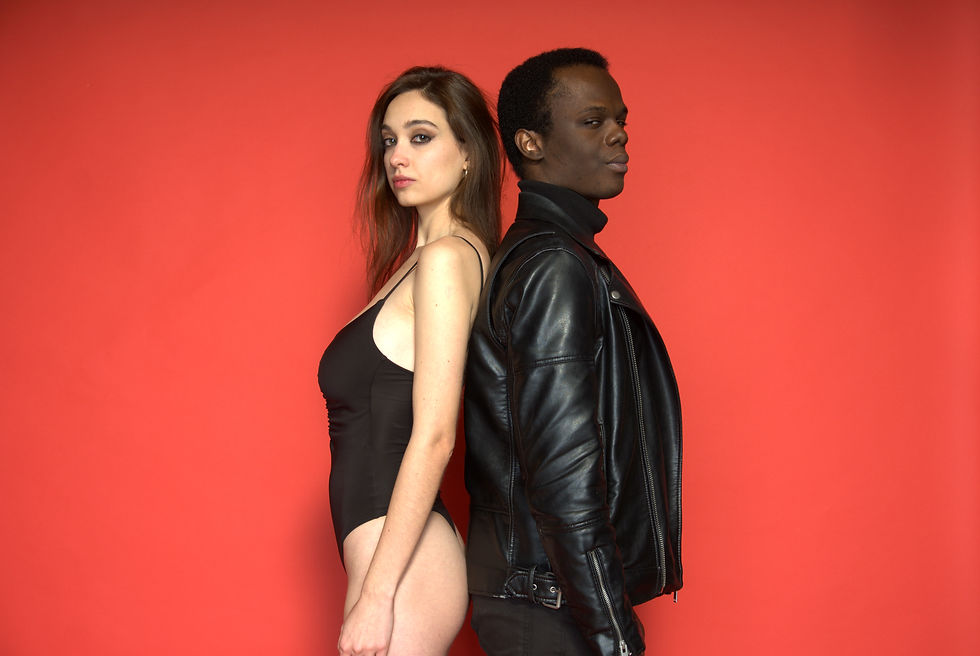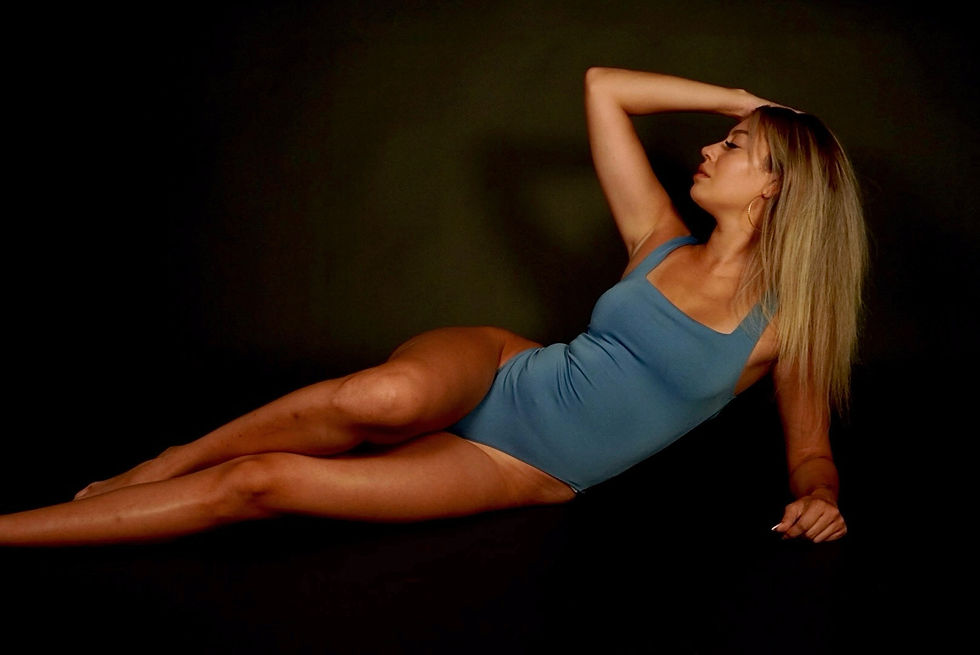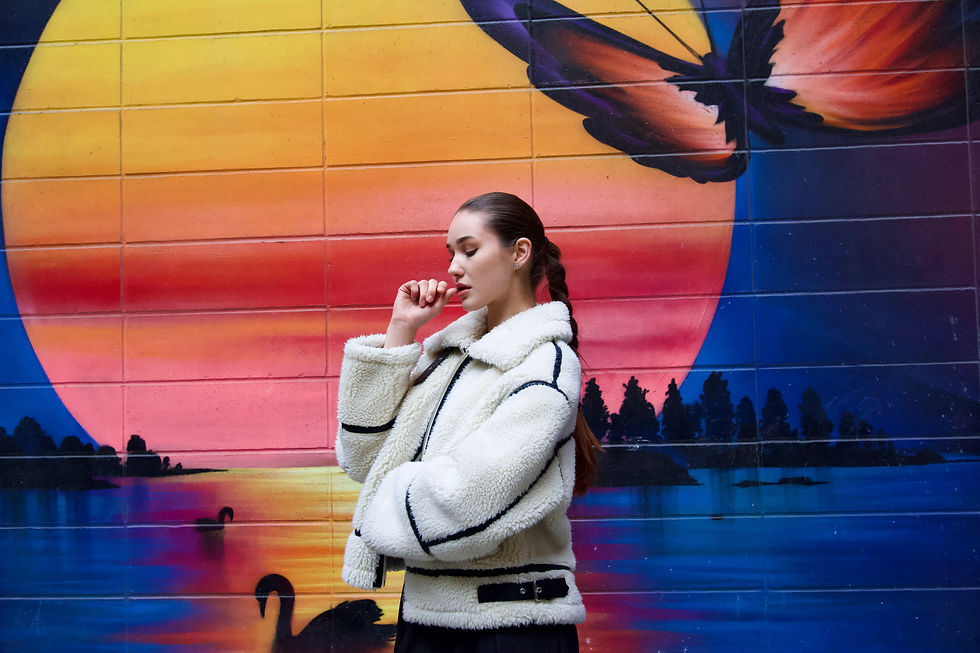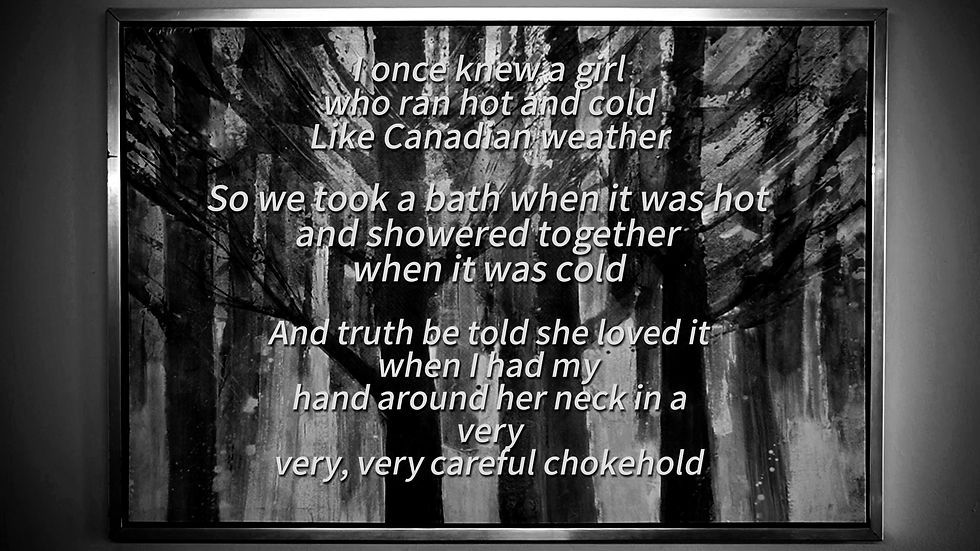The Creative Director’s Toolbox
- Daniel Akinlalu

- 5 days ago
- 12 min read
Updated: 3 days ago

The creative director is a coveted position in the fashion industry.
Artists from different industries want to be creative directors, but few know what it requires.
Actors have been creative directors, so have musicians, photographers and film directors. I can tell you from my experiences as a multi-hyphenate artist that all of these art forms will bring unique perspectives to fashion for the desires of a wide variety of potential clients.
Clients like to see how clothes fit magnetic characters as a film’s product placement.
Clients like to see photographs of models in designer clothes in fashion magazines.
Clients like to listen to music at fashion shows and when shopping at the mall.
Creative directing is not a position where you explicitly promote yourself, even though self-promoters can get these jobs, your effectiveness as a creative director comes down to how well they can promote your services to clients. Creative direction is a service... a vital one.
While the responsibilities of a creative director, tend to vary depending on the markets serviced by their clients. Not every creative director gets multi-year contracts with fashion houses but there are 3 baseline expectations, that anyone interested in creative directing one day, and everyone seeking the services of a creative director should be aware of.
Create a message that resonates
Cast a solid team
Control logistics responsibly
If a creative director does these 3 things consistently they will build a great resume.
Since the fashion industry is an industry built on exclusivity, that also relies on the strategic image and appearance of inclusivity with respect to certain markets, to sell products.
Sometimes a creative director is hired more as a fashion brand’s muse, to win the hearts of certain social crowds and demographics instead of for their abilities as a visionary artist.
However, all the tools required for greatness in this position, remind us that creative directors offer clients a service similar to directing films, or conducting for an orchestra.
In other words, creative direction is a visionary art.
This brings us to the first responsibility of a creative director.
Create A Message That Resonates
A creative director needs to create a message that resonates.
This is the first step, all it requires is that you think carefully, because you need to understand and reflect the times for your message to resonate, on the other hand you will still need to separate yourself from the mainstream enough to stand out with your message.
Let’s consider fashion as an industry that allows people to own art they can wear.
Think about how your message will resonate aesthetically and how to present this message to the audience because people want to know what wearing your art can do for them.
Money likes to move fast. Clients can glance at a stylish mannequin, imagine themselves wearing a new outfit and walk in to buy instantly bringing their fantasy to life of looking classy and elegant. On the other hand, your message could focus on making clients feel sexy and powerful – if there’s one thing everyone learns online it’s that erotic art has the power to attract attention and fascinate onlookers, bolder clients want to wear this power.
You can’t be everything to everyone like a buffet menu – even for creative directors with multiple talents, your core message is the immersive glue created to hold the attention of your audience. This glue is also what your team relies on to bring the client’s fantasy to life.
If you are selling clothes or fashion magazines online, then of course you’ll hire magnetic models, but it is the responsibility of the creative director to ensure that each model understands the message, confused models can’t sell couture fantasies properly and the creative director with no core message has already become a meme on social media.
The kind of creative director that makes you mad...
Jean Luc has been humorously satirizing these clout chasing, hard partying, bed hopping creative directors, but if you listen to his music above, his message is crystal clear.
Rage bait fantasies have been a part of fashion for decades, but there is a difference between inspiring envy, or sexual frustration in an audience who pays for such fantasies, and pissing off clients or collaborators by failing clearly communicate a vision, in a time where apathy is mainstream, people who work in the arts are desperate to find something to believe in. If you want colleagues to trust you, then wear your message on your sleeve.
There are many, many types of core messages. I’ve had deep conversations with my disciples to help each assemble an impactful message by digging into what drives their creativity, and by cross examining their inspirations to get to the bottom of why each artist keeps waking up from their sleep... to make their art everyday in an apathetic world.
For some of you reading these words, the answer is linked to love and romance. What's more is there are plenty clients for creative directors with romantic messages, such as:
Fashion magazines that sell an image of privilege or authority
Fashion magazines with an audience who craves a soft and cosy life
Fashion designers who make scarves, sundresses and wedding dresses
Musicians who need music videos for their love songs or heartbreak stories
Restaurants and hotels based in the financial district of large cities
Real estate companies who sell condos, houses and apartments.
Perhaps you might have also heard infamous quote, “Armani dresses the wife, Versace dresses the mistress.” So, keep in mind that some of your potential clients will prefer hedonistic messages for their creative direction. Like these clients listed below:
Fashion magazines that sell an image of opulent excess
Fashion magazines with an audience who craves an adventurous life
Fashion designers who make lingerie, swimsuits and dresses for the nightclub
Fashion designers who make shocking and otherworldly clothes with fetish models
Musicians who need music videos for their playboy stories or stripper friendly songs
Restaurants and hotels based in the nightlife district or large cities
Resorts on islands that attract tourists and influencer groups
There are more complex types of core messages we can discuss another time, but for the sake of this blog post I’m keeping it simple, so you can see how different parts of creative direction come together in a variety of projects – as you might have already guessed, this blog is not for bland NPCs, or conformist cogs in the wheel, this blog is for deep artists.
And this post is for the rare souls who strive for excellence, for the ambitious creative directors who want a guide to greatness. It’s for selective clients hoping to look back on work that you hired a creative director to do with pride. Now, whether your tastes lean more towards romantism or hedonism... affects the way that you make erotic art or provocative art as a creative director, it will also reflect the art you that enjoy and buy as a client.
Figuring out your core message, will narrow this down, if it’s not crystal clear for you yet.
Plus, the bigger your team, the more depth and clarity of intention is needed to bring your fantasy to life. You’ll need to know how to express your message in ways that people from a variety of social crowds can understand, you’ll need a quick and compact version of your message that works as a slogan you can chant as a group, as well as a more fleshed out and immersive description of what your art can do for your audience... so there’s a tip to take note of... learn who your audience is. Get in their minds, learn their values and beliefs.
If there’s videography involved, then your audience will expect a message elevated to the level of storytelling just to finish watching the video online where millions of other videos are competing for your client’s attention – not every view translates into a sale, but read on if you’re interested in how soulful storytelling can increase your view to conversion ratio.
Cast A Solid Team
Some creative directors think casting needs to be a search for perfection.
They dream of casting teams full of beautiful, glamorous people with super-large social media followings, but as I mentioned in the section before, not every view results in a sale.
Before an audience can tap in with your promo and buy your product, that same audience needs to believe in your message. The team plays a big role in whether this will happen.
Let’s say a creative director is casting for a perfume ad, and the intention is telling a visual story in the style of a neo noir, a thrilling mystery that gives each model a sensual vibe with a hint of menace – like the enigmatic characters revered in art house films. This would mean the audience needs to feel confidence radiating from the cast. What’s more is, your is audience looking for emotions as they scroll, and it’s how the story is told that determines whether they will pay enough attention to absorb the feelings expressed by your cast.
Get people’s attention for a chance to make a meaningful impression with your message.
Perfume is a product that engages our sense of smell, so the creative director with a perfume brand client must figure out how to engage the eyes and ears of their audience with a compelling audiovisual narrative... before they’ll even feel interested in a sniff.
This is where selling fantasies comes in.
If a member of the cast has a magnetic screen presence, but their voice isn’t solid for the dialogue even something as subtle as an accent... which sounds too foreign for the client’s market mean that performance artist needs a dialect coach, or they must be replaced.
So... the question of casting isn’t really a search for perfect looking influencers.

The vibes which can help audiences believe in your message. If you’re selling powerful emotions, your cast needs to be able to tell a story with gravitas. On the other hand, for storytellers who focus on deep emotions, you should be looking for performance artists that give the vibes of an old soul. You must learn to sense the energy behind a person’s eyes during auditions, notice any shifts in energy in their search for a magnetic character.
While I do agree with Shakespeare on many subjects, once he said there is no art that finds the mind’s construction on the face, but this search is what great creative directors must do when selecting and leading each team member. Perhaps in 2025, we can finally recognize this visionary art, even film directors today will tell you a large chunk of their job is casting.
Remember, audiences scroll through videos and pictures looking for emotional states.
So cast a solid team, with the right vibes for your projects, so audiences tap into your values because they were sold on the cast from the moment, they saw them – thanks to the vibes expressed in their performance art. Solid teams bring in solid conversation rates.
Solid teams are selected based on the characters they have the ability to play.
Control Logistics Responsibly
When most creative directors think of logistics, they think of the budget.
While the amount of money the client is willing to spend to bring their fantasies to life is important. So is the amount of time, the client is willing to wait to see their fantasy play out on screen, or selling in retail stores. As you'll soon see, time is more valuable than money.
Let’s go back to the perfume ad example from the last section, for a few moments.
Remember the decision about whether to hire a dialect coach?
This is where logistical control comes into play.
The budget for the perfume ad might be more than enough to hire a dialect coach to teach a foreign model how to convince an audience that she can speak perfect English, but the amount of time it would take for a model to learn a new accent could sabotage the project.
This is a situation where a creative director might decide to work with an actress instead – which would cost a fair bit more, but the benefit is acting is a performance art where artists are expected to learn new accents quickly, while modelling is an art form that loves silence.
If a magazine has a deadline at the end of the month, and a creative director has booked a photography studio for the photoshoot, any lateness from the model has a logistical cost.
Hiring a team that can’t hit a deadline is another mistake many creative directors make. Lateness on a photoshoot can lead to sticky situations where there isn’t enough time to take photos at the location, or to edit the photos in time for the magazine’s deadline.
Some teams can be a logistical liability, so when casting a team, always keep in mind that a solid team should be a logistical benefit – be as strict and controlling as necessary when it comes to time, because sometimes casting changes are required for logistical reasons.
Budgets can be negotiated, and rates can be adjusted, but lost time won’t come back. Like I said before, time is more valuable than money, especially when considering logistics.
A great creative director can work miracles with a limited budget, but when the budget is limited and time is not used responsibly, then clients and audiences can feel cheated out of their own time spent watching your fantasy – prevent that by making sure the team is solid enough to become a logistical benefit, look for models who show up early, cast actors who memorize their lines quickly, build a team of performers who can improvise if needed and make sure every member of the cast and crew can follow direction under pressure.
If they can follow your direction when auditioning, don’t assume it’s all good just yet.
You’ll still need to check how flexible your team can be in rehearsal, before you can be sure they will be able to handle the intensity of storytelling while following the logistical plan laid out in your itinerary. You may need to hire a team that can channel nervousness and stage fright into excitement and adrenaline. Or cast veteran performance artists instead who have learned to stay present and calm under pressure. These include but are not limited to:
Models who have already have magazine covers in their portfolio
Models who have walked in multiple fashion shows in different cities
Actors who had fascinating dialogue scenes in multiple films or tv shows
Actors who have played a range of character types in a believable way
This might not be obvious when scrolling on social media pages, unless you have already trained yourself to ignore content, so it can be helpful to ask for a resume or demo reel.
Creative directors should not be fooled by desperate performance artists who tell stories of work they’ve done with nothing to show for it in attempts to win contracts that they don’t deserve. This is showbusiness, babe – it’s what you’ve shown that determines the business you attract. So stop posting brain rot content if you want to make memorable art one day.
Read that sentence again, because it applies for visionary artists and performance artists.
If you’re a model or actor who keeps posting content, and you’re surprised that creative directors aren’t flooding your DMs with offers for editorials and fashion shows, then it’s time for you to wake up to the fact that models and actors create their own momentum by being provocative. Remember that nothing is stopping you from networking with creative directors at fashion events, instead of chasing the guy with the most expensive gear, look for the creative director with a vision that reflects the fantasies you want to bring to life.
Keep in mind that you can send a DM introducing yourself and you can put the money you’ve made as content creator into the pockets of a creative director willing to give you a big break, or work for free, especially if you're new to the kind of fantasies involved.
If you are an actress who doesn’t have a demo reel full of dialogue scenes, it can be difficult for you to even get cast in student films, so paying a creative director to make three or four scenes with characters that can get you noticed by the right eyes, is an investment in your career. Or going to an acting class to refine your craft before updating your demo reel from content to art... remember, it’s what you show, that enables your advancement.
For the creative directors reading this blog post, consider going to more networking events and parties with the intention of meeting new collaborators and clients. Even if you are an introvert, you still need people to know that you are talented, so go out and meet people.
Now, this might require a bit more sobriety than what you’re used to, since your ability to communicate your vision as a creative director will be inhibited if you are under the influence. Plus, if you’re bold enough to meet new collaborators in parks, subways, cafes, or other public places you can find artists in the daytime, then you should be sober for this.

If you need some motivation, here it is... I met Louise on the subway.
After discovering that we had both moved here from Europe, we talked about art then linked up some days later to take photos at a bar. I talked about a film I was casting for.
She was interested in joining my team so after sending her the audition sides, Louise gave me a pretty decent live audition. This audition and several others are in the member’s vault.
What’s more is while most creative directors scout the majority of their team on Instagram, I prefer to meet creative strangers in person, and talk about art before looking at their social media page. This gives me a sense of who they are, and the fantasies they can bring to life.
Of course, in 2025, this isn’t always the case, you may connect with a lot of artists from Instagram, but what’s important is building a solid team, because as the creative director the question of what next happens is on your shoulders, the audience is counting on you.
And so is your team...
Whether you met an artist on the street, on IG, or backstage at a fashion show, you can race down the path to living life by enjoying the fruits of making art together, just follow the steps we’ve laid out today. To summarize, a great creative director... creates a message that resonates, with a solid team of performance artists who are a logistical benefit, so that each artist makes the most of their time. Be smart with your time as a creative director...
Then your team and your clients will thank you for your service.




Comments